I Read a Year of Robert E. Howard Pastiche So You Don’t Have To (But you really might want to)
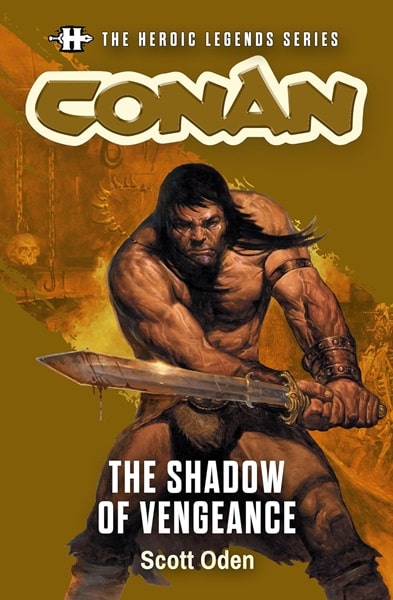 |
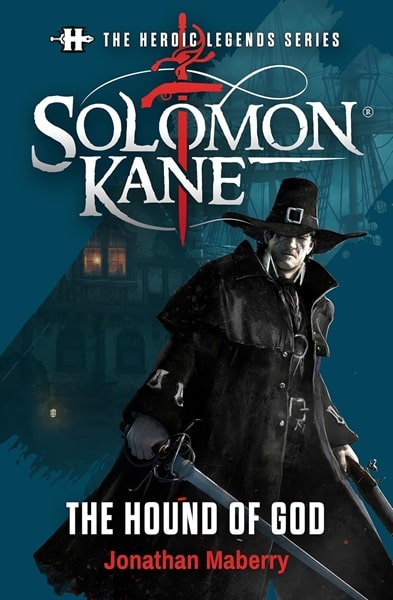 |
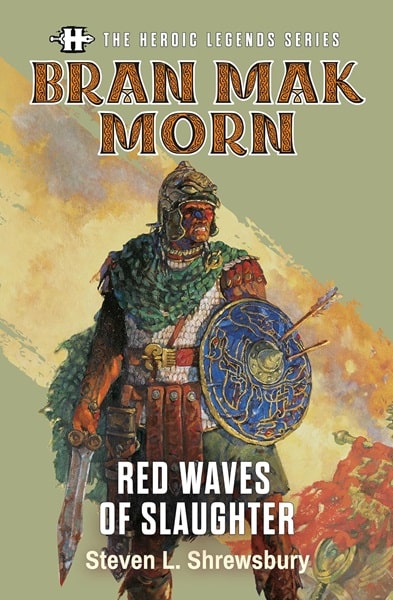 |
Three installments in The Heroic Legends Series from Titan Books: Conan:
The Shadow of Vengeance by Scott Oden (January 30, 2024), Solomon Kane:
The Hound of God by Jonathan Maberry (November 28, 2023), and Bran Mak
Morn: Red Waves of Slaughter by Steven L. Shrewsbury (March 26, 2024)
Pastiche — basically, licensed fan-fic — has been around as long as there has been fiction, but certain properties “lock in” on it; becoming sometimes so richly filled with authorized sequels, continuations or standalones, that the pastiche comes to outweigh the original work. BG’s Bob Byrne might tell me I’m wrong, and has the chops to do so, but I think Sherlock Homes probably outweighs every other character for stories written by hands other than the original author. But in the fantasy realm, that nod must go to Robert E. Howard, and of all his creations, to Conan of Cimmeria.
Starting with L. Sprauge de Camp and Lin Carter’s “posthumous collaborations,” of the mid-20th Century, wherein they finished unfinished manuscripts, rewrote non-Conan stories and added tales of their own to create a coherent timeline of his adventures, REH pastiche truckled along quite steadily through the 70s, with stories by diverse hands from Poul Anderson to Karl Edward Wagner, Dave Smith and Richard Tierney to Andrew Offut, and for not only Conan but for Solomon Kane, Bran Mak Morn, Black Vulmea and others.
Many of these works were forgettable, some pretty good and a few excellent (IMO, the Offut Cormac Mac Art stories co-written with Keith Taylor are decidedly better than Howard’s use of the character and stand on their own as great S&S). After a glut of Conan novels into the early 80s by TOR, again by many diverse hands such as Robert Jordan and John Maddox Robert, the wind went out of Sword & Sorcery’s sails and there was little-to-nothing in REH pastiche for decades. Conan lived on for a time in Marvel comics, then a Dark Horse’s excellent reboot, in a MMORG, and that was it.
Then, out of nowhere, Heroic Signatures proudly announced it had acquired the rights to Robert E. Howard’s properties in 2018 – and did nothing. Nothing until the last two years, when they suddenly launched a three-pronged approach – novel length works, a new Conan comic series partnered with Titan, and a series of monthly digital short stories penned by established fantasy and horror writers. It’s the latter we’ll talk about here.
Covering (so far) Conan, Belit, Solomon Kane, El Borak, and Bran Mak Morn, these monthly stories have generated some excitement among REH fans, even when an individual tale disappoints. S&S began in the short story field, and that and the novella has always been its natural form. Priced at a ridiculously low $1.99. each month a reader can get a “quick fix” and see how a well-known author might try and tell a REH story.
What’s more interesting is that two of those stories have centered on Belit, Conan’s doomed lover and pirate queen, and made her a central viewpoint character, both with and without the big Cimmerian by her side. There’s even a guest appearance in one by a certain cephalopodic Great Old One.
But are they any good? Let’s find out.
Methodology: My Totally Unscientific Process
When reviewing these works, I have to go by the assumption that pastiche is worthy in its own right — if you don’t think so, if the only Howardian fiction is REH, then there is no reason to read on. (But please don’t jump to the comments about “I don’t do pastiche.” Cool. You do you. That debate belongs elsewhere.)
That out of the way, let’s not pretend that every REH story is gold (“Vale of the Lost Women,” anyone?), but say that even bad Howard is not execrable, and probably sits at roughly the equivalent of 3 crossed swords on the system below, while the true classics: “Red Nails,” “Worms of the Earth,” and “Shadow Kingdom” are six crossed swords (seminal works, beyond what these works are trying to achieve.)
I’ve impressionistically evaluated the stories on the following questions:
- Does the author understand the characters?
- Does the author understand the setting and convey it successfully?
- Does the author styling (not their word choice/voice) match Howard’s? Ie: Conan stories range from closed-room mysteries to epic adventures, but there is a certain tone and style that makes it Conan. Does the writer get that?
- How good/memorable is the story itself? It might feel like Conan or read like Howard, but is it any good as a story?
Based on those questions, here’s our system.
Rating System:
⚔️ — Even for free, you have better ways to spend your time.
⚔️⚔️ — For $1.99 and an hour or two of free time, it’s fine, with all that four-letter word implies.
⚔️⚔️⚔️ — Decent pastiche for an REH fix, not that you’d mistake it for the master. Worth your time.
⚔️⚔️⚔️⚔️ — By Crom, this is really good! If you’re a fan of REH and his characters, and have an eReader, this should be on your reading list!
⚔️⚔️⚔️⚔️⚔️ — That rare bird: pastiche that hits all the right notes and is fresh enough to be counted worthy of the original canon.
The Entries: Conan, Bêlit, Solomon Kane, and El Borak
That established, on with the program. Here is the Baker’s Dozen of tales the Heroic Legends series has released, and my thoughts therein!
CONAN: LORD OF THE MOUNT by Stephen Graham Jones
Rating: ⚔️⚔️⚔️
Summary: Awakening covered in blood, the sole survivor of a doomed raiding party, Conan sets out for the taverns, women, and ale of Trinnecerl. To reach the village, however, he must pass ruins scattered with the shattered helmets, broken blades, and bones of untold victims—as well as the hideous the creature that left them, the Lord of the Mount. 34 pp
About the Author: Stephen Graham Jones is the NYT bestselling author of thirty or thirty-five books, a number dealing with the lived experience of indigenous North Americans as characters and settings for horror such as The Only Good Indians.
Review: I was excited when I read Jones would kick off the series as I love his writing, and his use of morally complex characters. Conan is too often portrayed as either utterly amoral, or simplistically direct, when he was neither. Graham gets that, although his Conan feels a bit off, and not because the story begins with Conan waking up from a bonk on the head in a cow-patty!
Although SGJ’s tale, a loose riff on Beowulf, is not terribly complex, nor features any of the signature horror for which the author is known, he clearly gets what makes Conan whom he is and the action pulses. A fun, fast, read, but not terribly memorable. Think of an issue of Marvel’s Conan in its heyday: most one-shots were fun but forgotten and next month came the next fix. This is like that.
CONAN: BLACK STARLIGHT by John C. Hocking
Rating: ⚔️⚔️ ⚔️ ⚔️⚔️
Summary: Seeking to avoid the Stygian border guard and cross the River Styx, Conan, the sorceress Zelandra, her scribe Neesa, and bodyguard Heng Shih discover a town that seems to be deserted. To preserve his own life, the town’s lord had bargained with a demon that still lurks there. It wants Zelandra’s cache of Emerald Lotus and will kill anyone who tries to stop it. Conan and his allies must defeat the demon and its minions — human and inhuman — in order to survive. Originally published as a twelve-part serial in Marvel’s Conan the Barbarian comic book (2019-2020), this is a direct sequel to Conan and the Emerald Lotus. 92 pp
About the Author: John C. Hocking is an American fantasy writer, the author of Conan and the Emerald Lotus, one of the last Conan novels published by Tor Books and a number of short stories, including his recent “Benhus, the King’s Blade” tales in Tales From the Magician’s Skull. One of his stories, “The Face in the Sea” (from Black Gate 13), won the 2009 Harper’s Pen Award for Sword and Sorcery fiction. Emerald Lotus and its long unpublished sequel Conan and the Living Plague were published this year as Conan in the City of the Dead.
Review: Finally! This is a Conan story that feels like a Conan story, by Crom. At 92 pp it is a full-length novella, and the extra space makes all the difference in quality of story, while not bogging down with padding to be a full novel (as Living Plague or the recent Stirling prequel to “Red Nails” do in places). The characters are spot on, Conan is spot on, the villain is creepy as hell (and far more “Lovecraftian” than the attempt in “Terror From the Abyss”), and the pacing is perfect.
Although we also have a sorceress about as benign as one can get in Hyboria, she’s hardly Glynda the Good and magic comes with a horrific price. If you have never read the Emerald Lotus, you don’t need to, even though the action starts, oh, a day after that book and is far more a sequel than Conan and the Living Plague, the other novel paired inside City of the Dead, which is actually only very loosely connected.
Hocking doesn’t try to write like Howard, choosing instead a clean, fast-paced prose that is modern and no frills, yet hits the marks of what pastiche should do — faithfully replicate the author’s characters and world, not try and establish revisions to canon, while not being afraid to be adventurous with its storytelling.
CONAN: THE CHILD by Brian Anderson
Rating: ⚔️⚔️
Summary: Conan is hired by a wealthy merchant to recover the man’s wife and son, who have been abducted by a dark sorcerer. The money is good and he has no trouble seeing to it that there is one less sorcerer in the world. With four soldiers, the Cimmerian follows the trail into a dense Stygian jungle. They are set upon by a demon spawn that kills the entire party — Conan only manages to escape death by wounding the creature during the melee. Doggedly he pursues and locates his quarry, only to discover that from the very start, his mission was a fool’s errand — one with fatal consequences. 60 pp.
About the Author: Known as one of the O.G. independent authors of the 2010-2012 indie explosion, Brian D. Anderson gained massive popularity right out of the gate with his debut series, The Godling Chronicles. His follow-up series, Dragonvein, was just as popular, Book One becoming a Top Five Finalist on Audible and the first indie author to score a six-figure audio deal. Twenty novels in as an indie, he signed a three-book deal with Tor Books for The Sorcerer’s Song series.
Review: Anderson can write, no doubt, and I appreciate that he plays with Conan’s rather rough sense of honor — he has a code but it sometimes requires complicated decisions, and if he can still make a buck doing it, so much the better. That was far more Howard’s character than many writers get right, but after Hocking’s term at the helm this installment falls flat.
The story itself was so-so, but the work loses a sword because, while I felt Anderson understood Conan well-enough and his rough sense of justice, his chosen setting, Stygia, did not feel so at all. A few vaguely Egyptian names, a mention of heat, throw in the name Set, but even most of the characters were from elsewhere. The sub-plot of a possibly magical sword, or at least a sword associated with a famed northern adventurer, was pointless and added nothing to the story. It just feels… generic.
CONAN: THE SHADOW OF VENGEANCE by Scott Oden
Rating: ⚔️⚔️⚔️⚔️⚔️
Summary: An intended follow-up to “The Devil in Iron.” A classic sword and sorcery tale by Robert E. Howard himself. In far eastern Turan, the regent of Khawarzim seeks bloody revenge. To achieve it, Ghaznavi is willing to strike a bargain with Karash Khan, the master of the Nine — acolytes of the god of Death, their powers and ruthlessness are spoken of only in whispers. The object of Ghaznavi’s hatred rides at the head of a score of Zaporoskan kozaks, bandits formed from fleeing criminals, escaped slaves, and deserting soldiers. Men of many crimes and countries. Their leader is accompanied by Octavia, a statuesque royal from Nemedia whose devotion to him is without question. The object of Ghaznavi’s burning hatred is Conan of Cimmeria. 78 pp.
About the Author: Scott Oden is a bestselling author of historical fantasy and sword-and-sorcery. Since his debut in 2005, his books have received starred reviews from Publishers Weekly and Booklist; he has been an Amazon Editor’s Pick and has been nominated for a Gemmell Award. His work has been endorsed by such preeminent authors as Steven Pressfield, David Anthony Durham, and John Gwynne. His fantasy is best-known for the historical fantasy trilogy chronicling the adventures of Grimnir, the last orc, in what might be called a love letter between REH and JRR Tolkien.
Review: I’ve written an entire column on this one, but for completion: “The Shadow of Vengeance” reads far more like a “posthumous collaboration” than most of those churned out by de Camp and Carter in the 60s and 70s, especially by the time the latter got finished tinkering with Howard’s prose.
Very, very few pastiche writers can mimic the original author’s voice, and most fail terribly when they do. Robert E. Howard is particularly tricky, both as his style is at once contemporary and yet also filled with flourishes and 1920s-30s stylings that seem archaic, even purple, to modern readers; a unique fusion that was unique in the 1930s and gives his fiction such long legs. It’s a raw kind of writing, perfect for the subject matter, but most writers sound… well… cheesy… trying to mimic it.
But not Scott Oden. Oden writes like REH, his prose feels like REH, his Conan is REH’s. He knows the Hyborian setting inside and out and if anything, the only flaw here is that you might need to go reread “Devil in Iron” to get up to speed with the events and characters driving this story, or just remember that this is the story that introduces the escaped noble woman-turned-harem-slave Olivia.
In “Shadow” Conan and Olivia are back, some months have passed, and Conan is leader of a band of kozaki raiders. Ever ambitious, Conan has hatched a complex plan that involves allying several bands of kozaki with the pirates of the Red Brotherhood to capture a Turanian frontier port, thereby establishing a free-city and safe haven for land-raider and sea-wolf alike. Unfortunately for Conan, Olivia’s former master, the Agha, may be dead, but his vizier wants vengeance and has enlisted the cult of Nine Sicari to achieve it for him…
This sort of double plot: Conan has a scheme, and unfortunately there is a counter plot in his way — possibly because of something he’s previously done — is classic Howard, and frankly, I’ll just say it; this is a better story than “The Devil in Iron,” while pulling a few threads from it, including a similar sort of magical threat at the end. This is a modern classic; the best pastiche can do.
SOLOMON KANE: THE HOUND OF GOD by Jonathan Mayberry
Rating: ⚔️⚔️
Summary: The roaming Puritan is close on the trail of a monster that has wiped out several small villages in remote corners of medieval Livonia, killing all it encounters. As he hunts the thing, Kane becomes convinced that it is a werewolf, though evidence suggests that the monster might be traveling with a group of humans. When he catches up to his quarry, however, what he discovers is unlike anything he has encountered in all of his wanderings. 44pp.
About the Author: Jonathan Mayberry is a New York Times best-seller and Audible #1 bestseller, five-time Bram Stoker Award-winner, anthology editor, comic book writer, executive producer, magazine feature writer, playwright, and writing teacher/lecturer. He is the current editor-in-chief of the latest incarnation of Weird Tales, and his recent Kaigen the Damned trilogy uses sword & sorcery themes and styling.
Review: Mayberry has his own styling and view on things, and much like the new Weird Tales is really its own beast that sometimes does homage to sword & sorcery, so to, are the Kaigen novels more dark epic fantasy or grimdark than S&S. You’ll like his styling or not, but here he is challenged with applying his style to someone else’s property… and largely fails.
This Kane pastiche is a victim of the Three Fs: fast, fun, and forgettable. Despite an interesting twist and some clever recasting of an Italian “cult” of folk magicians from 16th Century Friuli and some creepy undead legends of Northern Germany, this story doesn’t really go anywhere. It’s mostly exposition told to Kane by a third character, and the resolution occurs with embarrassing ease and no tension, rather at odds with the dark and foreboding set-up.
More to the point, the character of Kane doesn’t really feel or sound like Kane, not even a Marvel comics Kane, and honestly, I can’t decide if, as an accomplished horror writer, Mayberry just phoned this in to further establish his S&S credentials, or if he just really didn’t get what makes Kane, Kane.
A fine way to spend an hour, no more.
BêLIT: SHIPWRECKED by V. Castro
Rating: ⚔️⚔️⚔️
Summary: Queen of the Black Coast and captain of the Tigress, Bêlit, and her pirate crew roam the seas in pursuit of treasure and adventure. The crew are utterly devoted to their leader, yet they can do little when a massive storm beaches their ship on unknown shores. She and her first mate Seneka send a trio of teams to search for resources and human habitation, but only two return. When Bêlit and her best swordsmen venture into the jungle, they discover a temple, silent warriors, and a charismatic leader who promises Bêlit a kingdom… But at what cost? 39 pp
About the Author: V. Castro is a two-time Bram Stoker award nominated writer born in San Antonio, Texas, to Mexican American parents who now lives in the United Kingdom with her family. Much of her work integrates Mexican folklore into modern settings.
Review: I was really excited for this one; firstly, because Bêlit certainly is worthy of her own adventures, and secondly because I’ve read V. Castro’s horror fiction, such as Goddess of Filth, and her pastiche work Alien: Vasquez, and she has a talent for tough, edgy, slightly unhinged female protagonists — all of which well-describes our favorite piratess.
Sadly, that woman doesn’t really show up for this story. The Bêlit we get is highly sexual and a bit sociopathic (fair takes on the character) but doesn’t seem particularly deep or clever and basically has her plan go awry from the get-go and then stumbles toward its conclusion.
Honestly, I still think Castro might be the person to write this character, Bêlit is charismatic and alluring but not very nice, maybe not even entirely sane, and you see glimpses of that here but the real problem is length. The story is too short, too rushed, to fully develop, and I feel like it could easily have been a third, even half-again as long and been better served.
BRAN MAK MORN: RED WAVES OF SLAUGHTER by Stephen L. Shrewsbury
Rating: ⚔️⚔️⚔️ ⚔️
Summary:Dr. Elijah Blackthorn, a psychometric archaeologist with the Miskatonic Institute of Technology, seeks to validate the Dark Man statue discovered within one of the shattered pillars of the famed battlefield. Watched by an elderly priest and nun, he lays hands on the Dark Man. Blackthorn is witness to a bloody, second century battle between the Picts and the Romans. Aided by his son, Taloric, Bran Mak Morn fights the Roman soldiers who seek to rescue the bastards of Emperor Diocletian, captured by the Pict wizard Gonar. But the sorcerer needs those of royal blood for a ritual sacrifice… an act which will send arcane ripples down through the centuries.
About the Author: Stephen L. Shrewsbury is a horror author who entered into fantasy with his popular King of the Bastards trilogy and has worked successfully in both fields since.
Review: Howard loved his Picts, and while we associate him with Conan and Kull, I think it is fair to say he had far stronger sympathies with Bran Mak Morn, the Last King of the dying race (as he envisioned them), and who even summons Kull’s shade to fight beside him, as the descendant of Brule Spear-Slayer.
Bran’s cycle is smaller than Conan or Kull’s but has some of Howard’s most impressive work. Bran’s only been the subject of two pastiche that I know of the novels The Shadow Legion by Karl Edward Wagner, and For the Witch of the Mists by the brilliant team of David C. Smith and the late Richard Tierney. My point: there is a lot to be done with Bran, but you need some chops to get it done.
Shrewsbury is no novice, and his premise is bold; consequently, this one has drawn a lot of split views in the community, because it is so different — written in a very contemporary voice, nothing like Howard’s own, it combines a near-future set-up, that then leaps back through time purports to show the death of Bran and his transformation into the Dark Man idol. That’s pretty bold, as is the bloody pace with which this — at 27 pp the shortest entry of the series — is told. Shrewsbury shifts the emphasis from adventure to horror, which certainly is a part of the Bran cycle (see “Worms of the Earth” or “The Dark Man”), and uses the modern-day framing device, to jump right to this final moment of tension in Bran’s life.
If you know the Bran cycle well, then I’d say the result is mostly effective, though he then adds a modern-day final twist that is too much for the short space of the story and seems to create a final showdown for no real motive beyond shock/menace. I’m giving this one four crossed-swords for the originality, and showing pastiche can try new things, but it’s really 3.5, because the brevity and problems with the framing device make this feel more like a treatment of a longer story.
CONAN: LETHAL CONSIGNMENT by Shaun Hamill
Rating: ⚔️⚔️
Summary: In a port city in Zingara, Conan of Cimmeria drinks away the last of his meager purse. He’s considering robbing one of the city’s noble houses when he’s approached by a man named Flavio, first mate on a ship called Fortune’s Dawn. The Dawn is seeking mercenaries to transport valuable cargo to Aquilonia, the very heart of civilization. Conan is suspicious, but also deeply curious and in sore need of the coin, so he takes the job. His suspicions only deepen as he meets the reticent, sparse crew of the ship. However, Conan only realizes the severity of danger he’s walked into when a terrible scream reveals a crew member dead and mutilated on the deck. Armed with only his wits and his sword, Conan must figure out the mysteries of Fortune’s Dawn before the same fate befalls him. 37 pp
About the Author: The least “accomplished” of the authors in the series so far, Shaun Hamill’s debut novel A Cosmology of Monsters, was released in hardcover by Pantheon books in September of 2019. Vintage/Anchor published the paperback in August of 2020. His short fiction has appeared in Carve and Tor Nightfire’s Come Join Us By the Fire 2 and he co-hosts two podcasts: Team Hurricane Returns (with Darrel Smith, Jr.) and Fandom University (with Sergio Hernandez), and is an occasional panelist on the Lovecraft Ezine Podcast.
Review: Conan meets Last Voyage of the Demeter…
…with a welcome twist. A fun story, more so than a number of these recent pastiche, with a better working knowledge of the setting, but a thin sketch of Conan himself and the story is too short to develop the villain. Much more a scene in the opening act of a full story than what we get.
Although setting this in the days of a teenage Conan pre-most of Howard’s Conan stories was clever, it does nothing with the character. He is a teenager because we are told that, but he behaves pretty much like any generic “Conan” we’ve seen, and the side characters are cyphers, fulfilling their roles as victims or villains as the story requires, with no personality of their own. Basically, imagine your monthly Savage Sword of Conan story from the early 80s. Fine, nothing great, and once again too brief to be truly effective.
CONAN: TERROR FROM THE ABYSS by Henry Herz
Rating: ⚔️⚔️ ⚔️
Summary: Sailing together on the Tigress, Conan and Bêlit hijack and plunder a ship. Victorious but with a damaged ship to show for it, the pirates return to their secret island haven. They arrive to find their village under attack, not by men, but hideous things — part men, part aquatic creatures. Powerful but ungainly, these bloodthirsty frog-men are faster and even more formidable in the water. Conan, Bêlit and her crew watch helplessly as the abominations abscond with the women of their village. Unable to give chase due to their damaged ship, Conan and Bêlit swear vengeance on these monstrosities. 37 pp
About the Author: Henry Herz writes fiction and creative nonfiction for children. His children’s short stories have appeared in Highlights for Children, Ladybug Magazine, and elsewhere. He edited three anthologies, including Beyond the Pale. He is an editor for Running Wild Press.
Review: Almost brilliant, ends abruptly, almost ridiculously. Mild spoilers follow…
This is the second appearance of three of Bêlit, this time during Conan’s sojourn with her, and it marks the appearance of familiar characters, though it centers around a journey to an unknown island, where the islanders have fallen to a strange cult…
The story starts fairly strong, Conan and Bêlit are actually well characterized and I bought in to the first 2/3. Then the last third rushed to a conclusion that was neither exciting nor scarry, horrific nor heroic, it just… happened. Look, I’m going to cut to the chase: We all know Conan and Lovecraft’s Great Old Ones live in the same universe, so sooner or later, someone was gonna go there, not with the stray Ia! Nyarlarthotep or cephalapodic idol but with the big barbarian coming face to face with a major Mythos entity.
Fine, whatever. But if you are going to try and mash-up “Queen of the Black Coast” (approximately 11.9k words), “Dagon” (3k words) and “Call of Cthulhu” (approximately 12k words) did, you probably can’t do that effectively or convincingly in about half the length. You just can’t, and it shows. And that’s becoming a recurring problem with the series: authors trying to apply modern fashion for shorter narratives while trying to mimic Howard’s types of plots. It doesn’t work terribly well.
SOLOMON KANE: BANQUET of SOULS by Steve Savile
Rating: ⚔️
Summary: Caught aboard a ship destroyed in a terrible storm, Solomon Kane is the only survivor left clinging to the wreckage—and to life. Washed up on a stony beach, he is found by a young woman of the Hotu clan, who brings him back to their fortress in Odawara. While recovering, he discovers sigils and marks designed to protect the clan against demons aligned with the Hideyoshi daimyo. Intent on wiping out any who would resist his rule, the daimyo’s creatures have spread horror across the islands. The evils they have perpetrated are ungodly, there may only be one man who can put an end to this terror. 40 pp.
About the Author: Steven Savile is a British fantasy, horror and thriller writer, and editor living in Sala, Sweden.
Review: I know no more than that simple bio about this author, and likely never will, based on this entry. Whatever quality control Heroic Signatures/Titan are doing on this line, content control isn’t one of them or “Banquet of Souls” would never have seen light of day. REH had no problem playing a bit with historical veracity in service to a good story but there are so many things wrong with this turkey, which reads like the rationale for how we got our old D&D characters into an Asian setting for a one-off adventure back in the 80s, that it is hard to know where to start.
Kane arriving in Japan ten years before the first documented Englishman with NO explanation of how he got there, the Japanese characters speaking English (not Kane speaking Japanese, they speak English!) was just too much suspension of disbelief before we ever got to the supernatural which don’t feel unique to the setting at all. Kane is less REH’s Solomon Kane than ever James Purefroy was in the film by the same name, and far less entertaining.
Served up with lackluster prose and a weak plot there is nothing to recommend this — I originally DNFed and went back to reread this for this column — another hour of my life I will never get back. If you are looking for Japanese sword & sorcery, track down C.L. Werner’s short stories and leave this piece of Kane apocrypha to oblivion.
BELIT: BONE WHISPERS by Michael A. Stackpole
Rating: ⚔️⚔️ ⚔️ ⚔️
Summary: “Those who possess the codex come to a bad end.”
The Shemite shaman N’yaga is in his village when he is visited by the young Bêlit, there in pursuit of the Codex Osyrania. The Codex is a magical book that contains the location of all the secrets ever buried, each spot marked by a golden cross. Some crosses lead to treasure, some spell doom. The book was given to N’yaga by Bêlit’s father, who asked that he safeguard it. N’yaga reveals that a captain he served lost his ship gambling and took the Codex to buy it back. He throws the bones to tell her future, and sees her fate entwined with a black-maned lion. Yet he also sees in the bones that he is destined to go with Bêlit to the island of Knefetalla to retrieve the Codex. Together they set out in search of the legendary book. 36 pp.
About the Author: Michael A. Stackpole is the multiple New York Times bestselling author of over forty fantasy and science fiction novels, his best-known books written in the Star Wars universe, including I, Jedi and Rogue Squadron, as well as the X-Wing graphic novel series. He has also written in the Conan, Pathfinder, BattleTech and World of Warcraft universes, among others.
Review: The third offering with Bêlit, again with her as main character, is hands-down the best. Here N’yaga feels like a real character, not a cypher, Bêlit, though young in her career, feels like the clever feral-spirited Shemitish woman who will capture Conan’s heart, and the story’s twist isn’t a contrivance — it only seems so because we fans think we know what it is telling us.
Although not perfect, this is a good piece of sword & sorcery by an accomplished writer, who knows how to write inside other properties and get the most out of a word-count.
CONAN: THE HALLS OF IMMORTAL DARKNESS by Laird Barron
Rating: ⚔️ ⚔️ ⚔️
Summary: After killing his latest employer, a bored Conan wanders Stygia. His wanderlust is brought to an end when he is bitten by an asp. Though he attempts to extract the venom, it’s no use. At death’s door, the Cimmerian is saved by an otherworldly woman and a skull-headed tarantula.
Conan awakens being attended to by the merchant Khal, an acolyte of the strange goddess who saved his life. Khal came to Conan’s aid because Conan has been blessed by The Lady of the Desert; the Cimmerian is fated for something extraordinary. As it happens, fate is a seductive priestess with a legend to tell and coin to offer. Will Conan answer her call to adventure? 41 pp.
About the Author: Laird Barron, who calls himself an expat Alaskan, is the author of many short works and several books of horror, including The Imago Sequence and Other Stories; Swift to Chase; and Blood Standard.
Review: This was another tale I was eagerly anticipating, as Barron is a fantastic writer, again from the horror side of things, who is known for his rich prose. He’s well-versed in the pulps and knows his way around the Holy Trinity of REH, HLP, and CAS, but is nothing like them in style, so I was intrigued to see what he’d do here, which I believe is his first published work since nearly dying and an extended hospital stay.
Well, it’s mixed. Barron writes like Barron here, but his styling has its own lushness which I think works well for Howard pastiche, and his set-up of characters are intriguing, and the priestess feels very much like a character Howard would conjure. There’s a weirdness to the tale that I think REH would have loved, though there is also a divine intervention that isn’t entirely fitting. (“Phoenix on the Sword” notwithstanding… as that divine intervention or just magic?)
The action sequences are good but nothing special, but the resolution is unexpected and very good. Overall, this is one of the more original of the offerings and I could argue four crossed swords for that, but settled on three because again, the pacing is just a bit rushed. I’d like to see a longer tale by Barron where he can really let loose.
EL BORAK: THE SIEGE OF LAMAKAN by James Lovegrove
Rating: ⚔️ ⚔️ ⚔️⚔️
Summary: While on an intelligence mission in Central Asia, British Lieutenant John Stock encounters Francis Xavier Gordon, the renowned adventurer better known as El Borak. Called “The Swift,” the Texan gunslinger is as at home in the Pamir Mountains as the snow leopards that inhabit them. Times are desperate, Gordon the legendary city of Lamakan, ruled by the mysterious Queen Zohra, is not only very real, but in danger.
Surrounded by encroaching Russian troops, Lamakan faces an existential threat. With Stock desperate to learn more about Queen Zohra, and Gordon desperate to free her people, the two must venture forth into a city under siege and hope to save it. Facing fire from all sides, it is up to the fearless El Borak to rescue the mythical Lamakan from total devastation. 41 pp.
About the Author: James was born on Christmas Eve 1965 and, having dabbled in writing at school, first took to it seriously while at university. Straight after graduating from Oxford with a degree in English Literature, James set himself the goal of getting a novel written and sold within two years. In the event, it took two months. The Hope was completed in six weeks and accepted by Macmillan a fortnight later. The seed for the idea for the novel — a world in microcosm on an ocean liner — was planted during a cross-Channel ferry journey.
Review: Our final entry is about Howard’s original adventuring hero, El Borak, a Texan gunslinger, swordsman and adventurer who fights and explores his way across Asia. Howard’s El Borak tales had several phases, ranging from more random locations and less continuity in his early 20s to settling on the Asian setting later on — I suspect in imitation of Mundy and Lamb. The odds are you know El Borak stories, even if you’ve never heard of him, if you’ve read a lot of Conan: L. Sprague de Camp recast a couple of El Borak stories into Conan stories by adding over supernatural elements, turning guns to bows, and changing names, much as he had some of Howard’s unpublished historicals. (Example: “Three Bladed Doom” becomes “The Flame Knife”).
Lovegrove is versed in the pulps and knows his late 19th century and politics of “the Great Game” well — he is an accomplished pasticher of Sherlock Holmes, both in straight Holmesian fiction and in a mashup with the Cthulhu Mythos. I like the former better than the latter (the first novel was a delight, later works jumped the shark, IMO, though the idea that Baker St. Irregulars are really compelled Worms of the Earth snakemen living beneath London is brilliant!), but he mimics Watson’s narrative voice well. I was curious how he’d jump to the decidedly American pulp-styling of Howard.
Well, we still don’t know because the story here is told entirely from the first-person narration of John Stock — El Borak is seen through his eyes — perhaps not a bad way to introduce the character to new readers. John Stock seems to be replacing the real-life John Fort as Captain of the 1st Regiment of Punjab Infantry, and the intended recipient of his narrative, George Curzon, is a real historical person as well. The besieged city-state of Lamakan is not real but is a stand-in for any number of autonomous kingdomlets in the Afghan/Turkestan region during this time.
As a swashbuckler, the story is decent but like much of the series, again suffers from brevity interfering with world-building and characterization. For example, our mysterious queen resisting Tsarist troops might as well not appear, as she is such a non-entity in the story that her build-up as a character is a waste of time. She’s a beautiful queen not a king because that seems “pulpy,” but even that trope has no purpose or exploration. The resolution, involving dynamite, fits the time and setting, although seemed more like something from the Banderas Zorro film than Howard; I suspect it was Lovegrove’s way of distinguishing El Borak from Conan and tying in his Texan roots. It works well enough.
Nevertheless, I felt like this story was trying to do more and explore more than some of the others in the series and hope Lovegove or others give El Borak more time, as he deserves it! Lovegrove has also penned a forthcoming Conan novel tied to the Titan comics crossover event, which itself centers around REH’s mythos story “The Black Stone,” so we’ll have a chance to see how he handles REH’s signature character when writing about him directly.
A Year of Pastiche — Final Analysis
So, is the Heroic Legends series any good?
Like most series, the answer is: sometimes. If you’re looking to try them out, here would be my recommendations:
- Of the thirteen stories, the only two must-reads are the Conan tales by Hocking and Oden (no surprise to those familiar with Howard pastiche), which are truly just first-rate sword & sorcery on their own, hit all the things good pastiche must do, and then exceeding those expectations.
- If you’re so inclined, I’d add that Stackpole’s story of Bêlit and Lovegrove’s El Borak are good stories, by expert, mature writers who know how to work in other’s universes, and you are going to have a good adventure story worth $1.99 and an hour curled up in a comfy chair.
- Most of the others….it depends. They’re cheap, they’re short, most are at least fun.
- I’d say stay away from the two Kane stories, especially the second. Neither feels anything like Solomon Kane, neither is terribly exciting, and neither is as faithful to the subject matter as, say, Rings of Power… (Yeah, I went there.)
Series Criticism: I’m glad this series exists and equally glad it has been renewed for another year. If there is any major criticism it is that Heroic Signatures/Titan seem to be fairly hands-off with the property — the authors can do what they wish, but when playing in someone else’s world, that isn’t always good.
My second criticism is really a problem of trying to create the kinds of stories Howard churned out in 2024. It is said that Sword & Sorcery’s natural form is the short story. That’s only somewhat t true. Its natural form is the short story — as it was written in the Pulp era through the 1960s. The current fashion for most short story markets is to produce stories in the 4000 – 7000 word range; there are only a handful of markets (most digital), that will go as high as 10-12,000 words.
Certainly, some of Howard’s best writing is short. “The Frost Giant’s Daughter” is barely over 3,000 words. But when we look at many of his most notable Conan stories, look at the length:
“Red Nails,” 31,200 words
“The People of the Black Circle,” 31,100
“The Black Stranger,” 30,500
“Beyond the Black River,” 22,000
“The Jewels of Gwahlur,” 17,200
“A Witch Shall Be Born,” 16,500
“The Scarlet Citadel,” 15,700
“Black Colossus,” 14, 400
“Xuthal of the Dusk,” 12,900
“The Devil in Iron,” 12,400
“Iron Shadows in the Moon,” 12,200
“Man-Eaters of Zamboula,” 12,100
“The Pool of the Black One,” 11,500
“The Tower of the Elephant,” 9,800
“Queen of the Black Coast,” 9,800
“Rogues in the House,” 9,700
“The Hyborian Age,” 9,400
“The Phoenix on the Sword,” 9,100
The Kane and El Borak stories are also mostly in the 9 – 20k word range, and indeed, the majority of his historical and fantasy writing sits north of 10k words and frequently is double that. By today’s reckoning these are novelettes, even in some cases, short novellas. Such stories have a depth of plot and character development and world-building that very few writers can achieve in 6000 words. (Sure, Richard Mathieson, Ray Bradbury or Graham Greene could do that, but no disrespect to the authors above, that’s a rarified company most of us are not in.) So, when these new stories are half, a third, even a quarter as long as what we think of as the seminal tales in canon, it isn’t a surprise they feel “light” or “rushed.”
I don’t think this is an editorial choice by Heroic Signatures and Titan — these are eBooks, after all, size is unimportant to cost, and Oden and Hocking’s are basically novellas. Rather, I just think this is mature writers used to writing short fiction to modern market specs. I’d suggest that the less they worry about that and let the story take whatever space it needs, be that 6, 12 or 18k words, they may find their writing hitting more of the right notes. Otherwise, stories will feel short and episodic: more like Marvel’s four-color Conan than Howard’s.
Takeaway: Being a good, even an excellent writer (of these thirteen writers, all are published, most are very successfully so, some are NYT bestsellers) in one’s own right doesn’t make one a great pastiche writer. It’s its own craft and requires some very particular skills as it is a kind of ghost writing meets posthumous collaboration and it is easy to do badly.
The new monthly series of short fiction by Heroic Signatures is far from perfect, but it is less than a monthly comic book and at least as entertaining, sometimes containing true jewels of REH pastiche, usually providing at least a fun diversion, only occasionally failing outright. That’s a better success rate than at lot of TV or film adaptations of properties, at least as good a success rate as Disney’s Star Wars expansions or Marvel movies, and far less expensive. If you aren’t reflexively opposed to pastiche, it’s worth supporting the project and giving it a try.
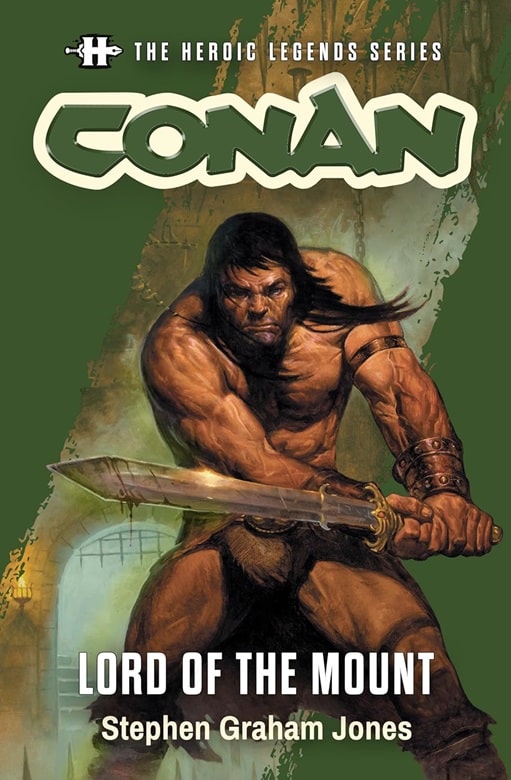
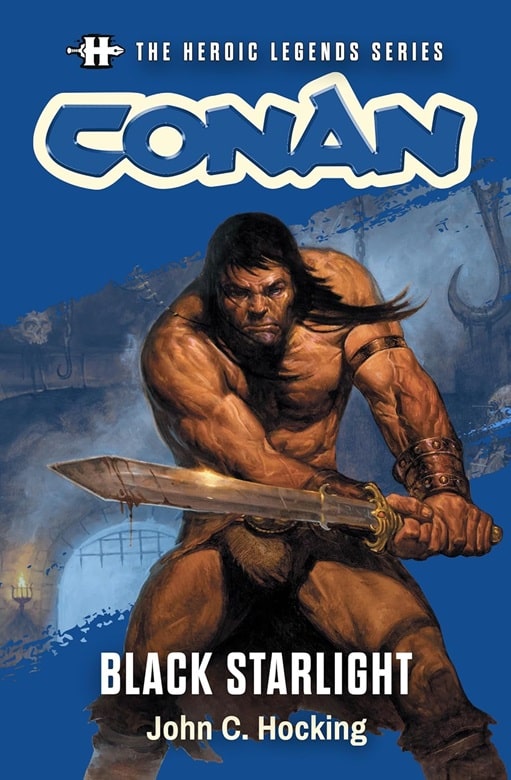
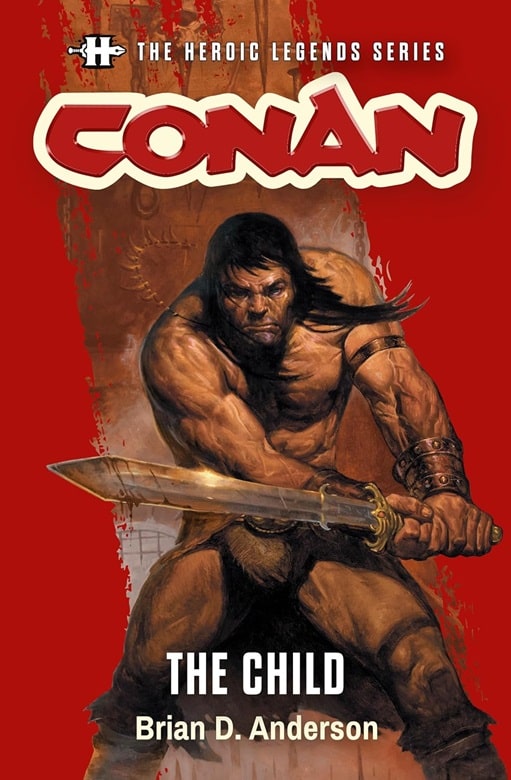
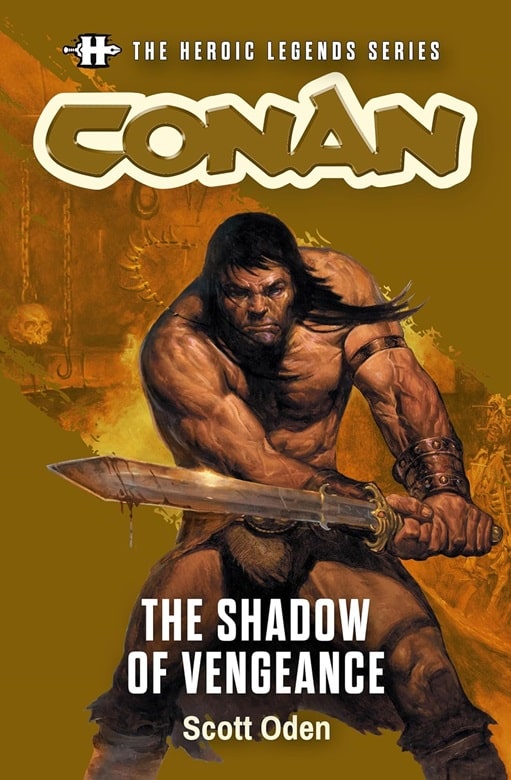
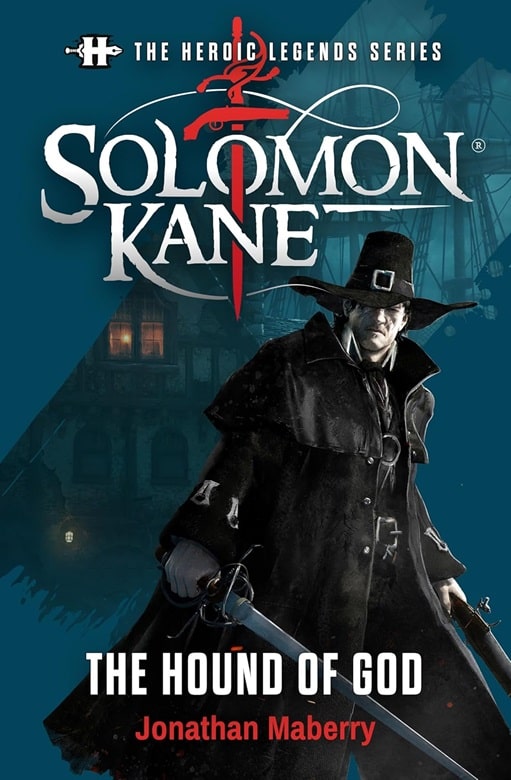
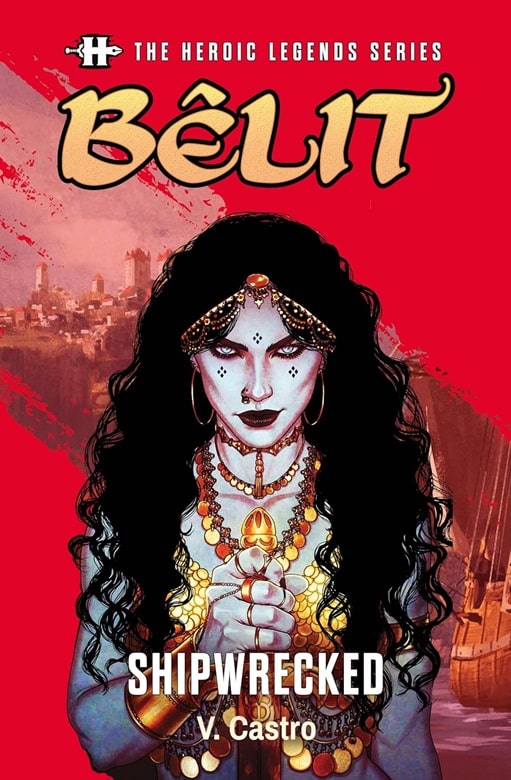
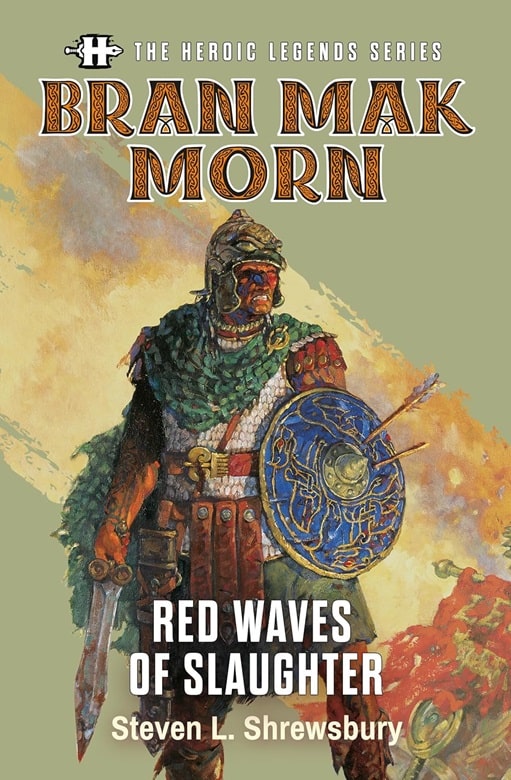
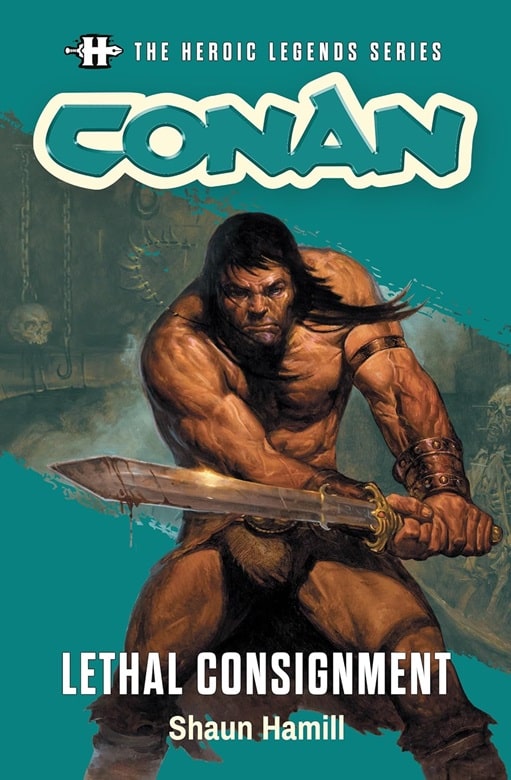

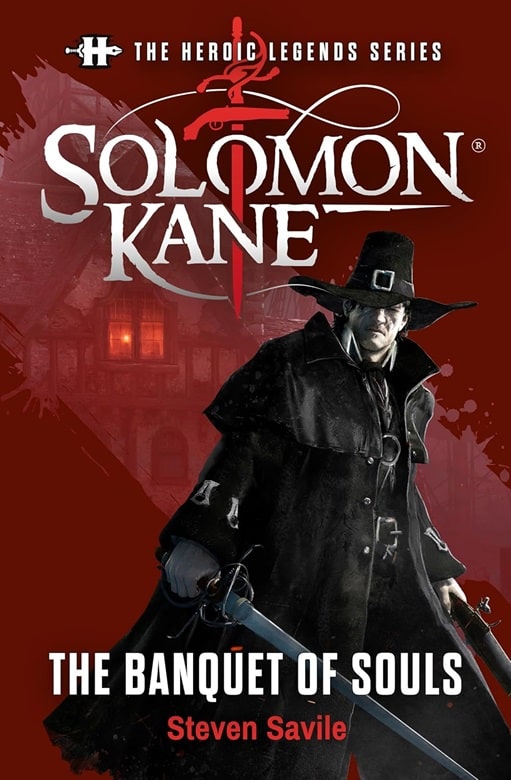
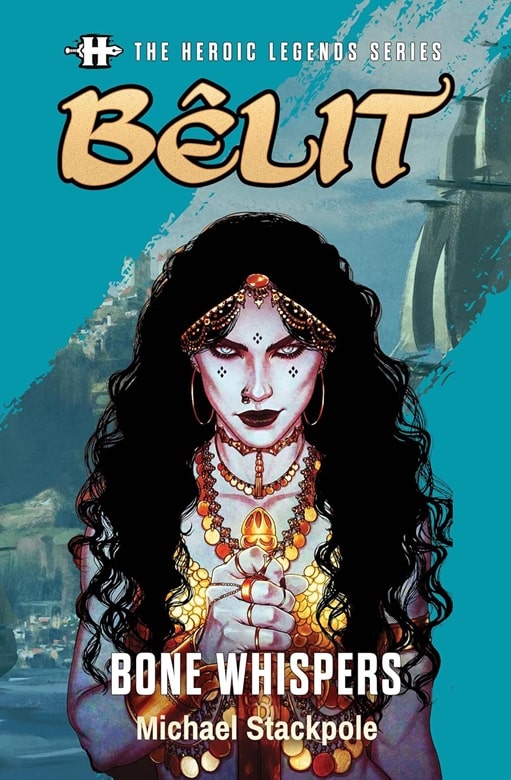
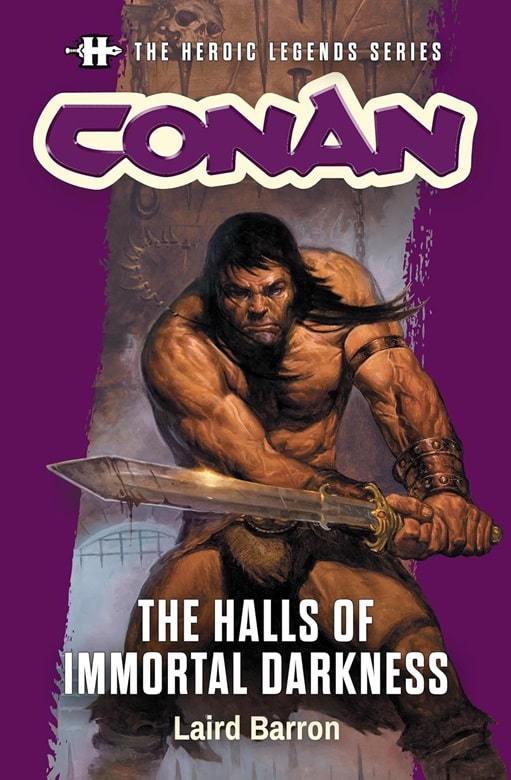
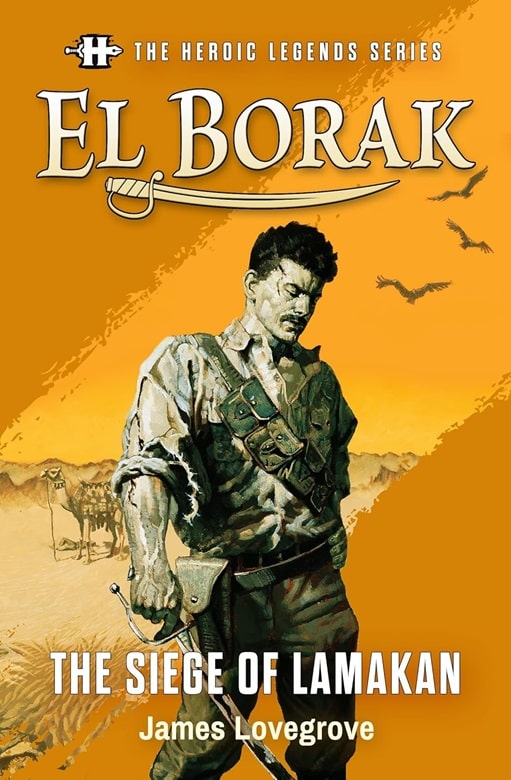
I’ve read them all and totally agree with every rating.
Not to mention the Titan Conan comics, Conan the Barbarian, The Savage Sword of Conan, and The Battle of the Black Stone, mini-series event, IMO; is the best Conan since REH originals. I put them up there with some of the best comics I’ve read in over 5 decades of reading comics.
And this is because: Heroic Signatures and Titan get it. They’re all on board and fans themselves and it shows.
That’s pretty cool; I’ve been reading through the Karlsson Chronology lately (I’m about halfway through Conan the Valorous) and it’s interesting to see who comes closest to REH’s original spirit. Of the ones I’ve read so far, I’d say Jordan sounds closest to the original voice, even more than De Camp and Carter (although sometimes it seems like Jordan is trying too hard to sound like Howard). I haven’t gotten to Hocking or Anderson yet, but I’ve heard good things (especially about Hocking) so I’m looking forward to those.
Thank you for the very thorough look into each of these, Greg. I have only read all of the Conan, and pretty much agree with your assessments. I’m interested in the El Borak and possibly the Belit, so your thoughts are appreciated.
[…] (Black Gate): Pastiche — basically, licensed fan-fic — has been around as long as there has been fiction, […]
I think you gave the El Borak story one sword too many. I was glad to see El Borak in a pastiche, but the plot could have been better. The author should have thought James Bond, especially given the murderous and relentless villain. Russian troops armed with guns go against a city protected by bows and arrows. But some of the battle strategy was faulty. After losing so many men in the siege, you don’t sacrifice hundreds more to provide a diversion for an avalanche, especially when the avalanche would have worked all by itself. Plus the seasonal timing of snow build up doesn’t fit in a story set in the early winter.
But I agree with your other thoughts that the story should have been longer for character development. Not only the Queen but the Russian villain.
And I agree with your evaluation of Oden and Hocking. I would add Chuck Dixon to that list. I can’t wait for the Chuck Dixon story now that he has reached an agreement with Heroic on publishing.
Well reviews are always subjective–I gave Lovegrove’s story the review I did the same reason I liked Shrewsbury’s: he tried something different. In the former’s case he also wove in real world figures/parallels and part of what makes El Borak unique is that he is very much a part of what was Howard’s near contemporary history, so I enjoyed that mix of the real and fictive.
I considered adding the two Dixon pastiche to the article then decided to stick just to the HS line. I’ve only read the first one and would give it three swords based on the others in the article, for those curious. I’m an oddball in that I don’t love Chuck Dixon’s take on Conan. I don’t hate it, either, but I never thought SSoC was his best work. (Full disclosure, I think Roy Thomas’s exhausted anything he had to say/do with Conan long ago, too. His guest run at Dark Horse was nothing short of tedious.)
Fascinating. Thank you, Mr. Mele, I’ve been wondering about this series.
This is an amazingly thorough review set. You rock